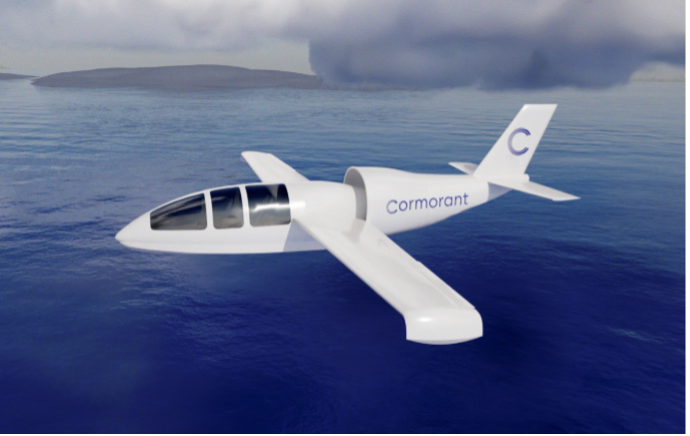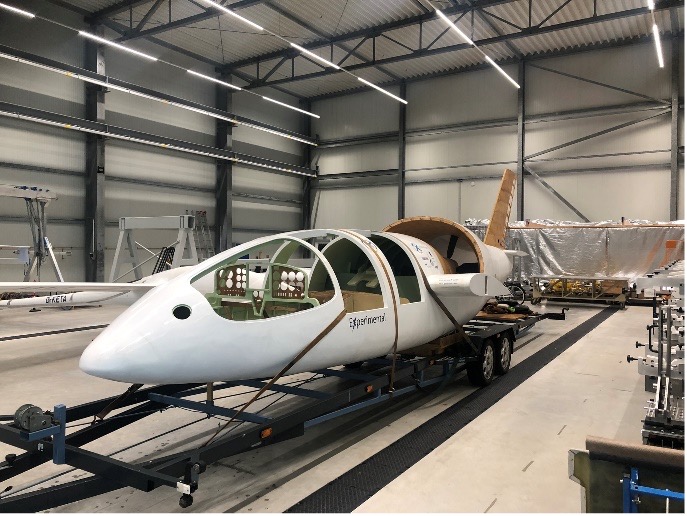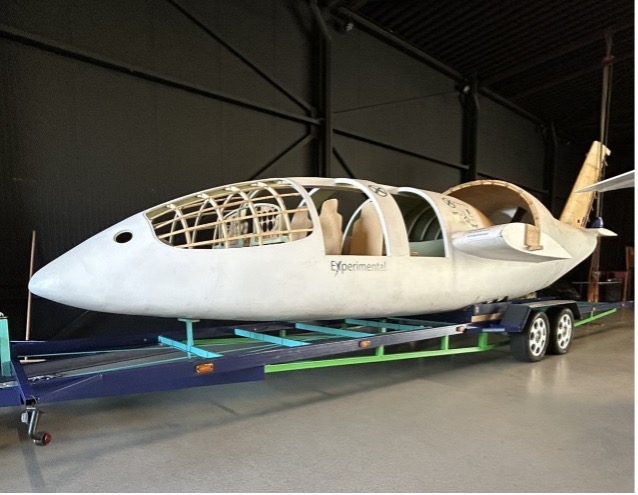Dutch electric aircraft sets the tone for sustainable aviation
Posted on
Press Release
Cormorant will go SAF to receive EASA certification
Dutch electric aircraft takes innovative lead in sustainable aviation
Please click here to access this Press Release as a downloadable Word (.docx) file, and here to access below pictures in a .zip file.




Hilversum, The Netherlands, 15 April 2025 – An electric aircraft that can carry eight passengers and has a range between 2,200 and 140 kilometres – depending on the energy vector; it sounds like something for the future, but for the Dutch startup Cormorant Aerospace it is reality in the making. With a clear vision and strategic planning, the team is working on a revolutionary aviation concept that can carry out its first operational test on hydrogen as early as 2026.
The first prototype has now been built and even goes a step further than just electric flight: based on a hydrogen plant, the aircraft can travel a distance of more than 400 kilometers (250 mi). There is one but, however, certification. None of the new energy vectors has been developed far enough to be certified. In order for the plane to be certified as a platform, a powertrain is first being developed that can pass this rigorous test.
eSTOL
Designed for both remote areas and regional airlines worldwide, the aircraft offers a unique added asset: it can take off and land on land as well as on water. Thanks to its advanced aerodynamic properties, the aircraft qualifies as an eSTOL (electric Short Take-Off and Landing), setting a new standard for flexible and sustainable flying.
Experience and Vision as Driving Forces
Behind this groundbreaking project is a small team of experts with strong aviation backgrounds. CEO and designer Chris Rijff gained experience at a small aircraft manufacturer and at Delft University of Technology. Frank Kaiser made his mark in aircraft design and certification at companies such as Fokker, Thales, and Collins Aerospace. Mark Sowery brings expertise in SME development including within the general aviation sector. Together, they combine deep technical knowledge with sharp business acumen—a combination that makes Cormorant Aerospace not only innovative but also realistic.
This realism is evident in the close collaboration with renowned partners such as Leichtwerk, Hoffmann Propeller, and universities in Scotland, as well as various Dutch partners. The innovative design makes use of existing and certified components wherever possible, allowing the design to be thoroughly calculated and tested from the outset. This approach not only ensures technical feasibility but also better compliance with the strict certification requirements of EASA, CS23 Level III.
Hybrid Now, Fully Hydrogen in the Future
Instead of focusing solely on battery technology, Cormorant Aerospace has opted for a hybrid approach that is more easily certifiable. The first model is equipped with a combination of a small battery pack and a turbogenerator running on SAF (Sustainable Aviation Fuel). The smart modular design ensures that future innovations can be seamlessly integrated: once battery technology or hydrogen systems reach sufficient maturity, the aircraft can be easily adapted.
The development is in its final stages, and the team expects to take the final steps toward test flights, certification, and production within 60 months. The focus is not only on the aircraft itself but also on establishing a certified design and production company. Production can take place in the Netherlands as well as in key markets elsewhere.
Future Plans and Investment Opportunities
So far, Cormorant Aerospace has largely financed its development from its own resources, enabling millions of Euros in value to be realized in the project. With the next milestone in sight, the company is preparing for its first external investment round. This will allow the company to further refine the prototype and prepare for demonstrations, including at Aero Friedrichshafen – a leading general aviation trade fair where Cormorant can showcase its unique capabilities to the world.
Market interest is already evident. Potential customers have indicated that the current design meets the performance envelope requirements of airlines seeking sustainable and efficient solutions. CEO Chris Rijff sums it up aptly: “Cormorant is not a startup with just ideas. Our design is so advanced that we are practically ready to approach investors with a complete design. This is the future of sustainable aviation, and we are building it.”
With a mix of innovative technology, strategic planning, and a pragmatic outlook on the future, Cormorant Aerospace is well-positioned to revolutionize the aviation sector. The first tests in 2025 will be a significant step, but if the team achieves its ambitions, this Dutch aircraft could well become a game-changer in the world of electric flying.
— ENDS —
For media inquiries, please contact:
Chris Rijff, CEO
Telephone: +31 653 76 31 25
Email: chris.rijff@cormorant.aero
About Cormorant Aerospace
Cormorant Aerospace is a Dutch aviation startup dedicated to developing a sustainable, adaptable, electric aircraft. With a focus on innovation, certification, and practicality, the company aims to revolutionize regional air travel and better serve remoter communities.
Cormorant Aerospace B.V.
Curaçaolaan 25
1213 VJ Hilversum
The Netherlands
T: +31 (0)35 647 9155
E: enquiries[at]cormorant.aero
Registered in the Netherlands at the Chamber of Commerce (KvK), no. 95592997.
BTW / VAT no.: NL862769863B01
Cormorant SEAplanes Ltd
5 South Charlotte Street
Edinburgh EH2 4AN
Scotland
T: +44 (0)131 605 0308
E: enquiries[at]cormorant.aero
Registered in Scotland at Companies House, no. SC748170.
VAT no.: GB427749952
Legalities
Website Disclaimer
Privacy Policy
Cookie Policy
Security
General Information
Accessibility Statement
Website Disclaimer
Privacy Policy
Cookie Policy
Security
General Information
Accessibility Statement
© 2017 – 2025 Cormorant Aerospace B.V. All rights reserved.
